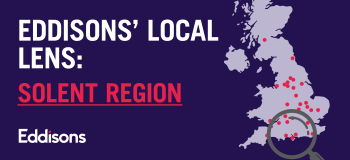01/10/2024
Insights
What is PPE?
PPE, which stands for personal protective equipment, is equipment worn to reduce risk of being exposed to potential hazards in a workplace environment. PPE is used in an attempt to prevent workplace injuries and illness from contact with workplace hazards. The types of PPE worn on construction sites include a hard hat, steel toe cap boots, a high visibility jacket, gloves, and protective goggles.
Why is PPE important?
As the sector with the highest number of fatal accidents every year, PPE is a vital safety measure in the construction industry. Whilst provisions can be made to ensure safety in the workplace, such as completing thorough risk assessments, workers may still be exposed to hazards and therefore require adequate protective equipment for construction work in order to comply with CDM (Construction Design Management) regulations.
Who is responsible for providing PPE?
Under the Health and Safety at Work Act (1974), employers must ensure suitable PPE is provided to employees. The employer is responsible for maintenance, replacement, and storage of PPE provided in a workplace. The PPE provided must fit properly and meet the requirements for the job it is used for.
Concerns over PPE designs
There are multiple challenges regarding PPE within our industry, with rising concerns over the inclusivity of its design. A survey was carried out by the Women’s Engineering Society (WES) to consult women working in UK engineering, interviewing just under 1500 participants who had worn PPE in their role. Rocket Science, an independent research organisation, then analysed the results and published a damaging report demonstrating evidence that women faced dangerous working practices due to poorly-fitting PPE.
Findings from the WES report
One key finding from the report was that 61% of pregnant women were not provided with the correct equipment to protect them due to a lack of maternity PPE. As a result, a large proportion of respondents reported the lack of maternity PPE affected their ability to continue their roles and had to leave prior to going on maternity leave.
42% of women reported that their PPE was often too large to correctly fit, and as a result they had to make modifications against HSE practices. Only 4% of respondents claimed their equipment fit them perfectly, as the overwhelming majority experienced difficulty obtaining fit-for-purpose PPE.
Over half of women (52%) questioned stated that whilst they had raised concerns with colleagues or managers, little action had been taken to facilitate access to appropriate and better-fitting PPE. Issues surrounding availability of PPE were linked to suppliers, rather than employers, as there is a reported lack of availability in women’s PPE amongst suppliers, combined with a longer delivery time for this due to lower stock. Supply issues are most prevalent amongst the manufacturing, health, and applied science sectors, which, when combined, account for 36% of the female workforce and comprise a concerning number of women unable to access appropriate safety equipment.
What are the dangers of ill-fitting PPE?
According to a report by the Center for Construction Research and Training, 77% of tradeswomen surveyed had been unnecessarily exposed to a hazard due to ill-fitting PPE. The main hazards included falls, eye exposure, and inhalation when wearing eyewear or respiratory equipment which did not fit properly, and as a result, subjects were exposed to chemical or debris more easily through the airways or eyes. To summarise the impact of this, improperly fitting PPE fails to protect against hazards, impairs women’s ability to work, and creates new hazards.
In addition, there are many male workers who have been found not to fit into PPE created for the average man. A focus on inclusive awareness within PPE development may help to decentralise design from the one-size-fits-all approach. The wider impact of this raises employment concerns, as ensuring correct PPE is provided for the team will demonstrate how team members are valued equally. In terms of representation, women make up 15% of the construction workforce.
According to the Federation of Master Builders, companies with more diverse teams are 33% more likely to outperform peers financially. In addition, research has shown that having more diverse workforces encourages better results through having a variety of perspectives to problem-solve, with 19% higher rates of innovation. Therefore, it may be in employers’ benefit to address challenges of PPE across an increasingly changing workforce from not only a social perspective, but a business one also.





